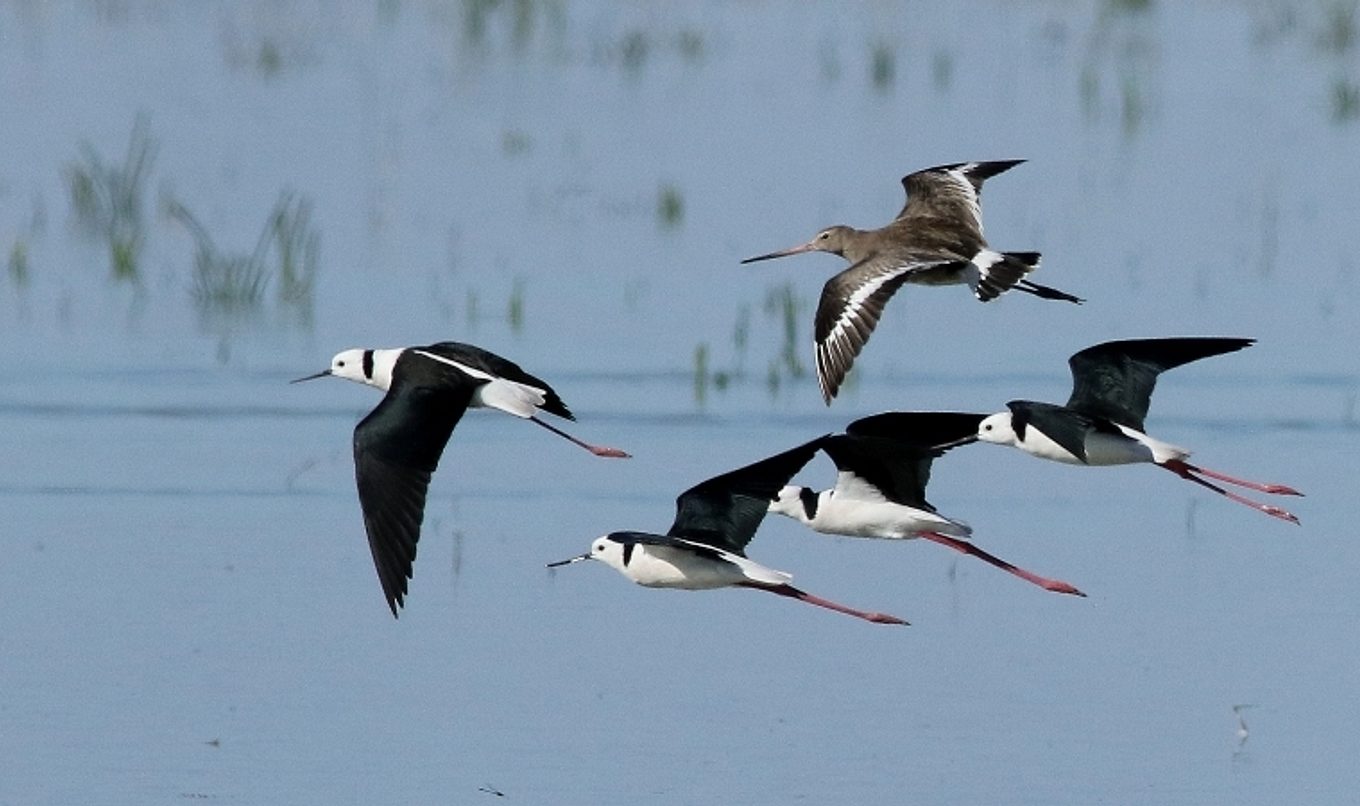Water for the environment sees waterbirds flock to Chowilla
Water for the environment pumped into the Riverland’s iconic Chowilla Floodplain has seen a spectacular response with waterbirds, including three migratory wading species, using the area in large numbers.

Between September 2019 and January 2020, The Living Murray (TLM) water for the environment was pumped to Coombool Swamp, a large temporary lake on the Chowilla Floodplain which requires a natural River Murray flow into South Australia of about 70,000 megalitres (ML) per day to begin to fill with water.
Senior Project Officer Alison Stokes said the amazing response by waterbirds, including swan nesting, was highlighted during a recent field trip to the site by the First People of the River Murray and Mallee Region.
“It’s been fantastic to see the benefits of water for the environment with such an incredibly diverse range of waterbirds, including migratory waders using the Swamp,” Alison said.
“During the peak of the watering event the Swamp was supporting around 1,500-2,000 birds from around 20 different species.
“Highlights have been large numbers of Sharp-tailed Sandpipers and Red-necked Stint, which travel thousands of kilometres from the northern hemisphere each year to visit Australia during the warmer months. We are really pleased that our watering provided them with a stop off.
“A single Black-tailed Godwit, another migratory wader was a surprise observation given there are no recent recordings in the Riverland.
“Large numbers of ducks, stilts, swans, ibis and a Peregrine Falcon were also recorded in the area. In addition to all the birds, the vulnerable Southern Bell frogs were also heard at Coombool Swamp during the survey in February.”
Alison explained that the Chowilla floodplain had previously experienced significant ecological decline due to long periods without flooding. Floods that naturally occurred about 45 times in 100 years now only occur about 12 times in 100 years resulting in rising soil salinity, the decline of trees, a loss of habitat and fewer breeding opportunities for floodplain wildlife.
Since 2004 individual wetland sites have benefitted from pumping of environmental water. The Chowilla environmental regulator has also been used since 2014 allowing more broad scale watering across areas of the floodplain.
“The use of water in this way has seen improvements in floodplain health. While there is still a lot to learn, the watering shows great potential for floodplain recovery,” Alison said.
“During a dry year like 2019/20, the environmental water delivered to targeted sites like Coombool Swamp has enabled the aquatic and wetland plants to flourish.
“Much of the lake has been covered in water milfoil, (Myriophyllum spp) which is an aquatic plant that provides shelter for fish and frogs to spawn.
“As water levels dropped, large areas of the lake bed were covered in creeping monkey flower (Thyridia repens) and blue rod, (Stemodia florulenta) attracting a wide variety of butterflies and moths.
“Black box and river cooba trees and lignum shrubs have also responded well to the much needed watering, with many of the plants putting on new growth and flowering.”
The Living Murray Program was established in 2002 to improve the health of six designated icon sites, one of which is Chowilla, they comprise over 320,000 hectares of forests, wetlands and lakes along the River Murray.
For more information visit: https://www.environment.sa.gov.au/topics/river-murray/improving-river-health/the-living-murray-program

